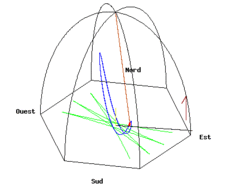
Astronomy
People have observed the stars for thousands of years, using them to find direction, note the passage of time, and to
express their values and traditions. As our technology has progressed, so has understanding of celestial objects and
events. Theories of the universe have developed over many centuries. Although to a casual observer celestial bodies
appeared to orbit a stationary Earth, scientific discoveries led us to the understanding that Earth is one planet that orbits
the Sun, a typical star in a vast and ancient universe. We now infer an origin and an age and evolution of the universe,
as we speculate about its future. As we look at Earth, we find clues to its origin and how it has changed through nearly
five billion years, as well as the evolution of life on Earth.
INTRODUCTION TO ASTRONOMY
What is the definition of "Universe" and how is it structured?
How did everything get started?
Has the universe a beginning or was it here since forever? Well, evidence suggests that there was indeed a starting point to this universe we are part of right now. But how can this be? How can something come from nothing? And what about time? We don't have all the answers yet so let's talk about what we know.
A lesson video on The Big Bang Theory from an excellent earth science educator, Mr. Sammartano.
THE SCALE UNIVERSE
THE SCALE SOLAR SYSTEM
Stars
Scale of Stars
Animations
(Interstellar)
Scale of the Universe (Smallest - Largest)
Scale of Black Holes
What are Black Holes?
Lesson Review Videos
(Intrastellar)
Solar System
The Moon
Elliptical Orbits
Drawing Ellipses
Moon Formation
Animations
(Intrastellar)
Lesson Review Videos
(Apparent Motion)
The Sun's Apparent Motion
Foucaults Pendulum Clip
Foucaults Pendulum

Foucaults pendulum is a piece of evidence that shows that the earth is rotating.
Seasons
Diagram Gallery
Click images to zoom





































